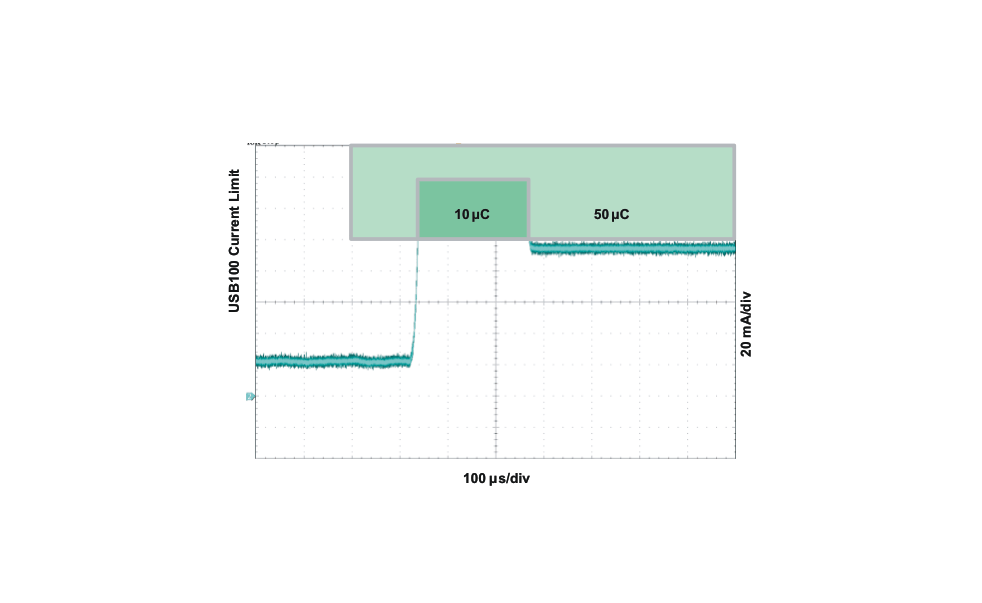ZHCSIF0N September 2008 – October 2021 BQ24072 , BQ24073 , BQ24074 , BQ24075 , BQ24079
PRODUCTION DATA
- 1 特性
- 2 应用
- 3 说明
- 4 Revision History
- 5 说明(续)
- 6 Device Comparison Table
- 7 Pin Configuration and Functions
- 8 Specifications
-
9 Detailed Description
- 9.1 Overview
- 9.2 Functional Block Diagram
- 9.3
Feature Description
- 9.3.1 Undervoltage Lockout (UVLO)
- 9.3.2 Power On
- 9.3.3 Overvoltage Protection (OVP)
- 9.3.4 Dynamic Power Path Management
- 9.3.5
Battery Charging
- 9.3.5.1 Charge Current Translator
- 9.3.5.2 Adjustable Termination Threshold (ITERM Input, BQ24074)
- 9.3.5.3 Termination Disable (TD Input, BQ24072, BQ24073)
- 9.3.5.4 Battery Detection and Recharge
- 9.3.5.5 Battery Disconnect (SYSOFF Input, BQ24075, BQ24079)
- 9.3.5.6 Dynamic Charge Timers (TMR Input)
- 9.3.5.7 Status Indicators ( PGOOD, CHG)
- 9.3.5.8 Thermal Regulation and Thermal Shutdown
- 9.3.6 Battery Pack Temperature Monitoring
- 9.4 Device Functional Modes
-
10Application and Implementation
- 10.1 Application Information
- 10.2 Typical Application
- 10.3 System Examples
- 11Power Supply Recommendations
- 12Layout
- 13Device and Documentation Support
- 14Mechanical, Packaging, and Orderable Information
9.3.4.1 Input Source Connected (ADAPTER or USB)
With a source connected, the dynamic power path management (DPPM) circuitry of the BQ2407x monitors the input current continuously. The OUT output for the BQ24073/ 74/ 75/ 79 is regulated to a fixed voltage (VO(REG)). For the BQ24072, OUT is regulated to 200 mV above the voltage at BAT. When the BAT voltage falls below 3.2 V, OUT is clamped to 3.4 V. This allows for proper startup of the system load even with a discharged battery. The current into IN is shared between charging the battery and powering the system load at OUT. The BQ2407x has internal selectable current limits of 100 mA (USB100) and 500 mA (USB500) for charging from USB ports, as well as a resistor-programmable input current limit.
The BQ2407x is USB IF compliant for the inrush current testing. The USB specification allows up to 10 μF to be hard started, which establishes 50 μC as the maximum inrush charge value when exceeding 100 mA. The input current limit for the BQ2407x prevents the input current from exceeding this limit, even with system capacitances greater than 10 μF. The input capacitance to the device must be selected small enough to prevent a violation (<10 μF), as this current is not limited. Figure 9-2 demonstrates the start-up of the BQ2407x and compares it to the USB-IF specification.
 Figure 9-2 USB-IF Inrush Current Test
Figure 9-2 USB-IF Inrush Current TestThe input current limit selection is controlled by the state of the EN1 and EN2 pins as shown in the EN1/EN2 Settings table in Section 7. When using the resistor-programmable current limit, the input current limit is set by the value of the resistor connected from the ILIM pin to VSS, and is given by the equation:
The input current limit is adjustable up to 1.5 A. The valid resistor range is 1.1 kΩ to 8 kΩ.
When the IN source is connected, priority is given to the system load. The DPPM and Battery Supplement modes are used to maintain the system load. Figure 9-4 and Figure 9-5 illustrate examples of the DPPM and supplement modes. These modes are explained in detail in the following sections.